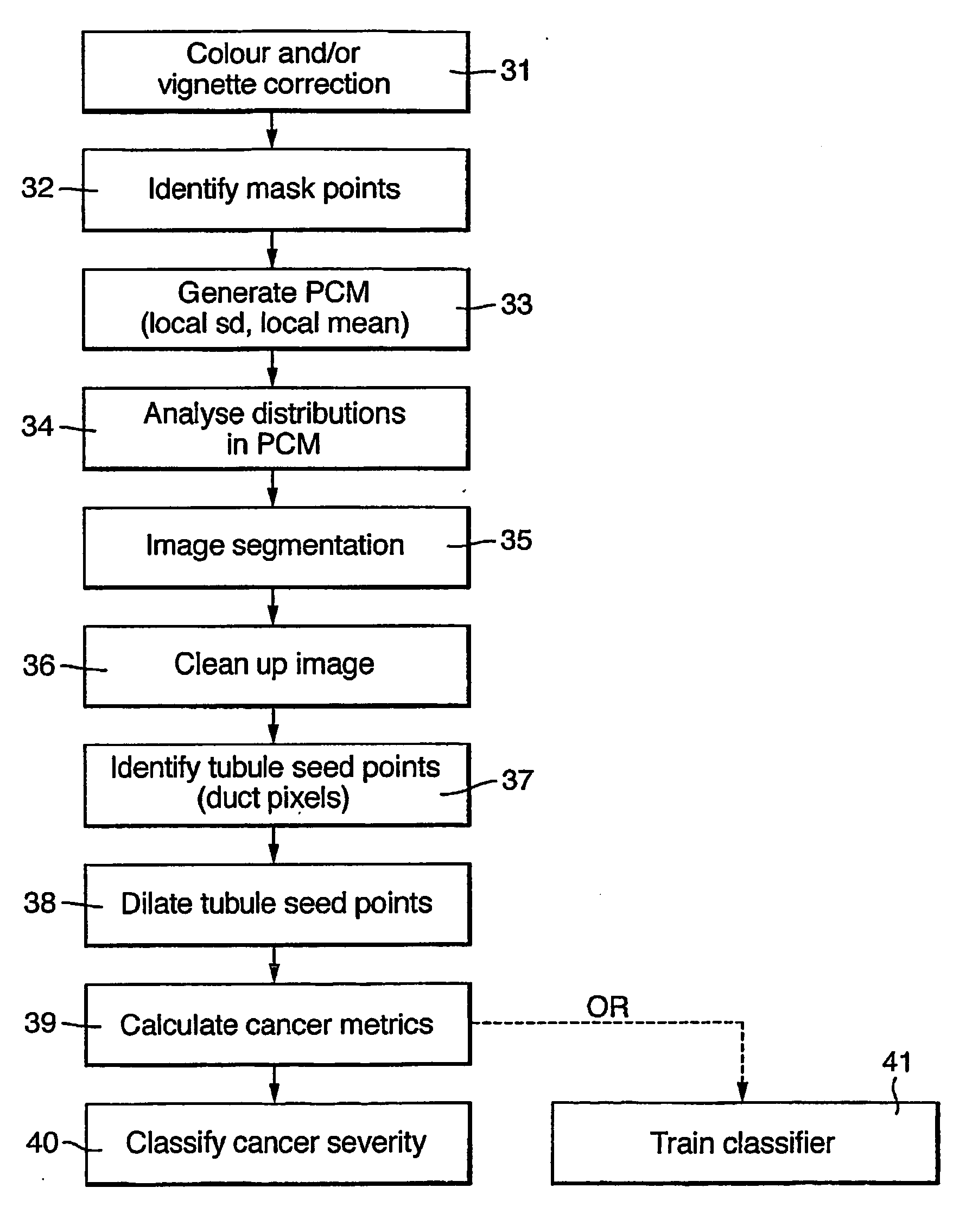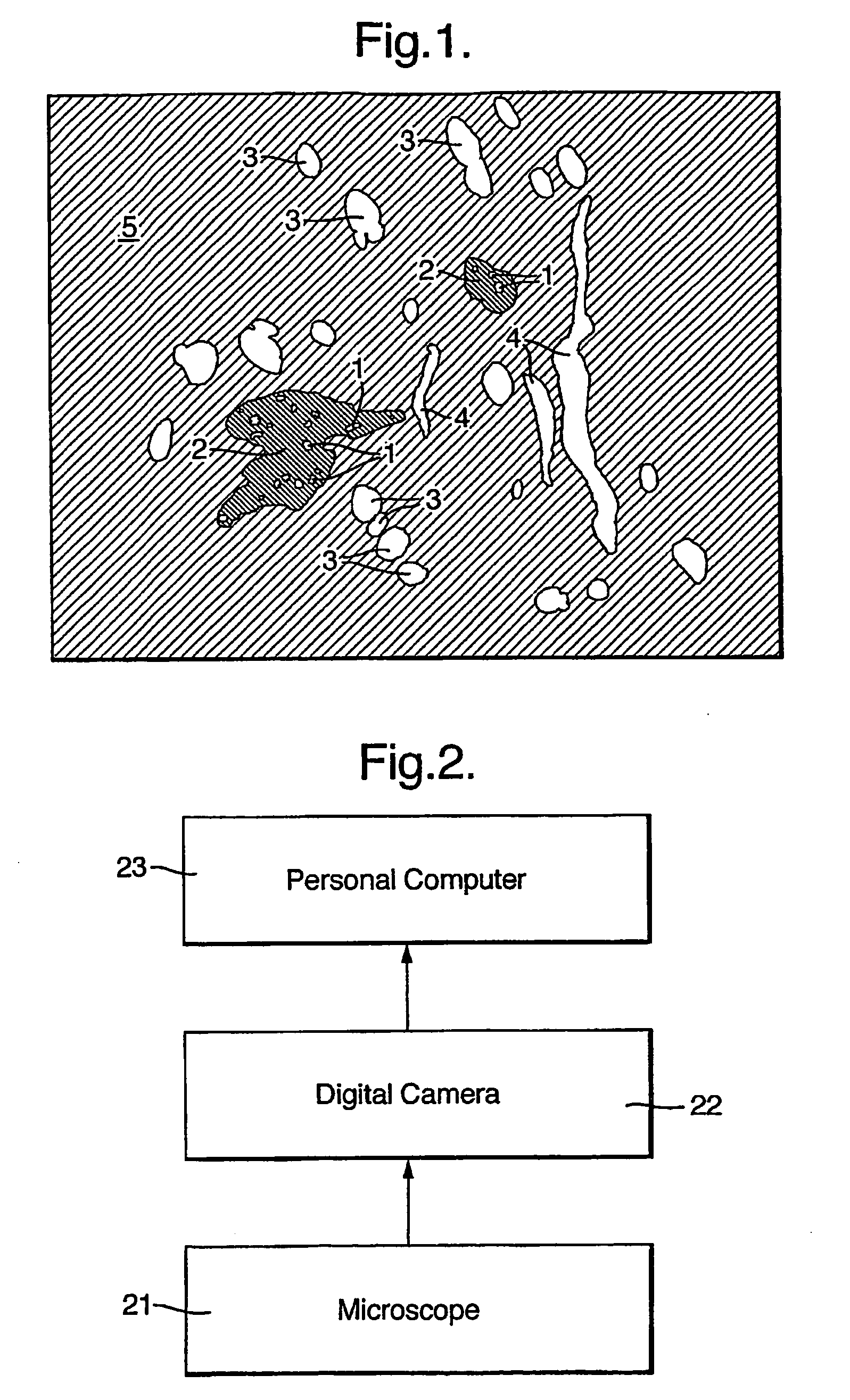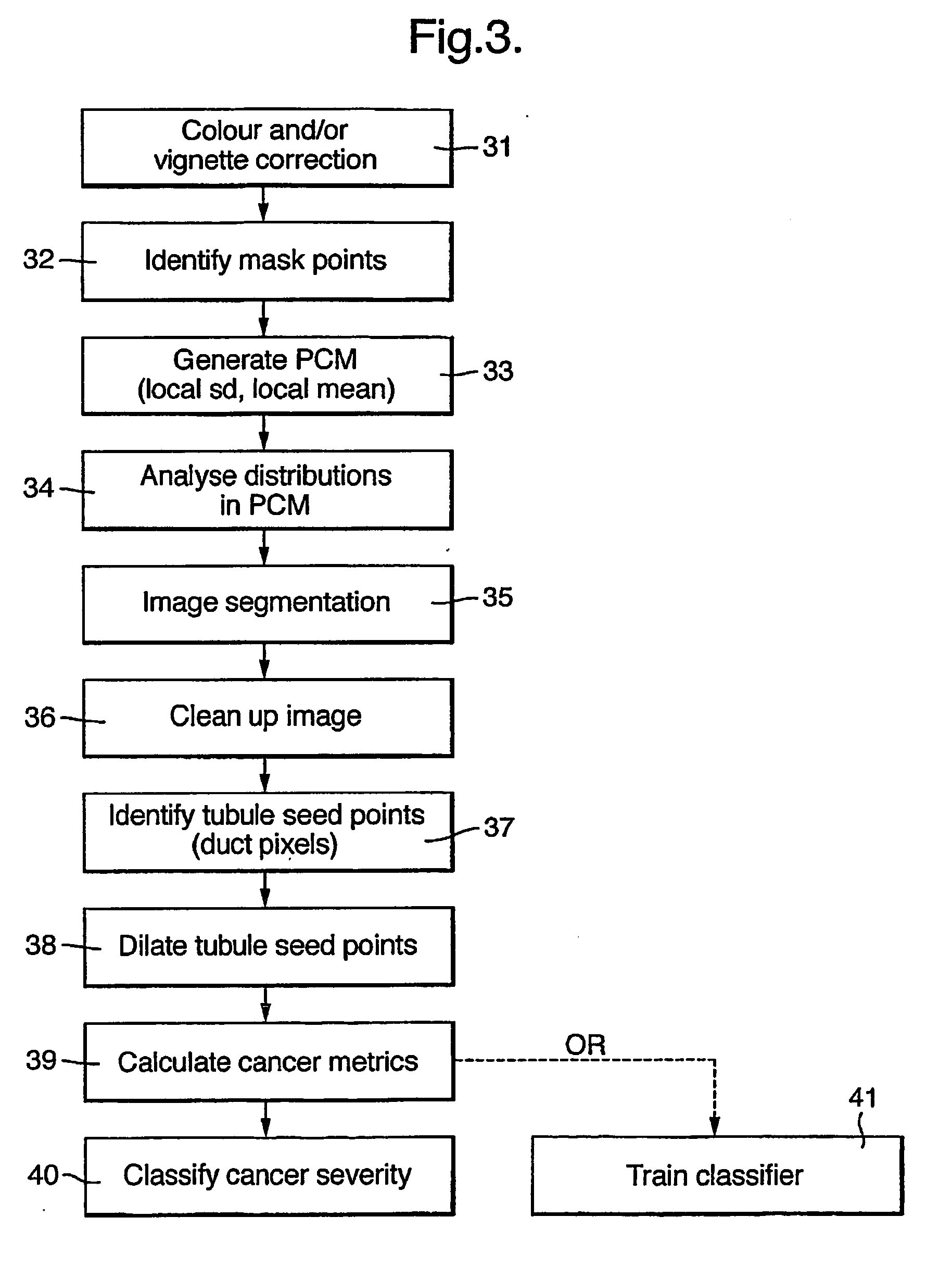Image analysis
a digital image and image technology, applied in the field of automatic analysis of digital images, can solve the problems of difficult to obtain the qualification to perform such examinations, requiring frequent review, and time-consuming, labor-intensive and expensive processes, and achieve the effects of reducing the complexity of some samples, reducing the difficulty of performing such examinations, and reducing the quality of images
- Summary
- Abstract
- Description
- Claims
- Application Information
AI Technical Summary
Benefits of technology
Problems solved by technology
Method used
Image
Examples
Embodiment Construction
General System Configuration
[0027]FIG. 2 shows a typical computer based system for image capture and processing for implementing the present invention. Sections are cut from breast tissue samples, placed on slides and stained in accordance with conventional techniques. A pathologist scans the slides in a microscope 21, selects regions which appear to be most promising in terms of the analysis to be performed, and they are photographed with a digital camera 22. Images from the camera 22 are downloaded to a personal computer (PC) 23 where they are stored and processed as described below. In a system utilised by the inventors, the microscope provided optical magnification of 10× and the digital images were 1476 pixels across by 1160 down. Other magnifications and digitised sizes can be used without compromising the algorithm more particularly described below provided that some system parameters such as cell size, the maximum bridged gap in dilation and shape criteria are adjusted acc...
PUM
 Login to View More
Login to View More Abstract
Description
Claims
Application Information
 Login to View More
Login to View More - R&D
- Intellectual Property
- Life Sciences
- Materials
- Tech Scout
- Unparalleled Data Quality
- Higher Quality Content
- 60% Fewer Hallucinations
Browse by: Latest US Patents, China's latest patents, Technical Efficacy Thesaurus, Application Domain, Technology Topic, Popular Technical Reports.
© 2025 PatSnap. All rights reserved.Legal|Privacy policy|Modern Slavery Act Transparency Statement|Sitemap|About US| Contact US: help@patsnap.com



